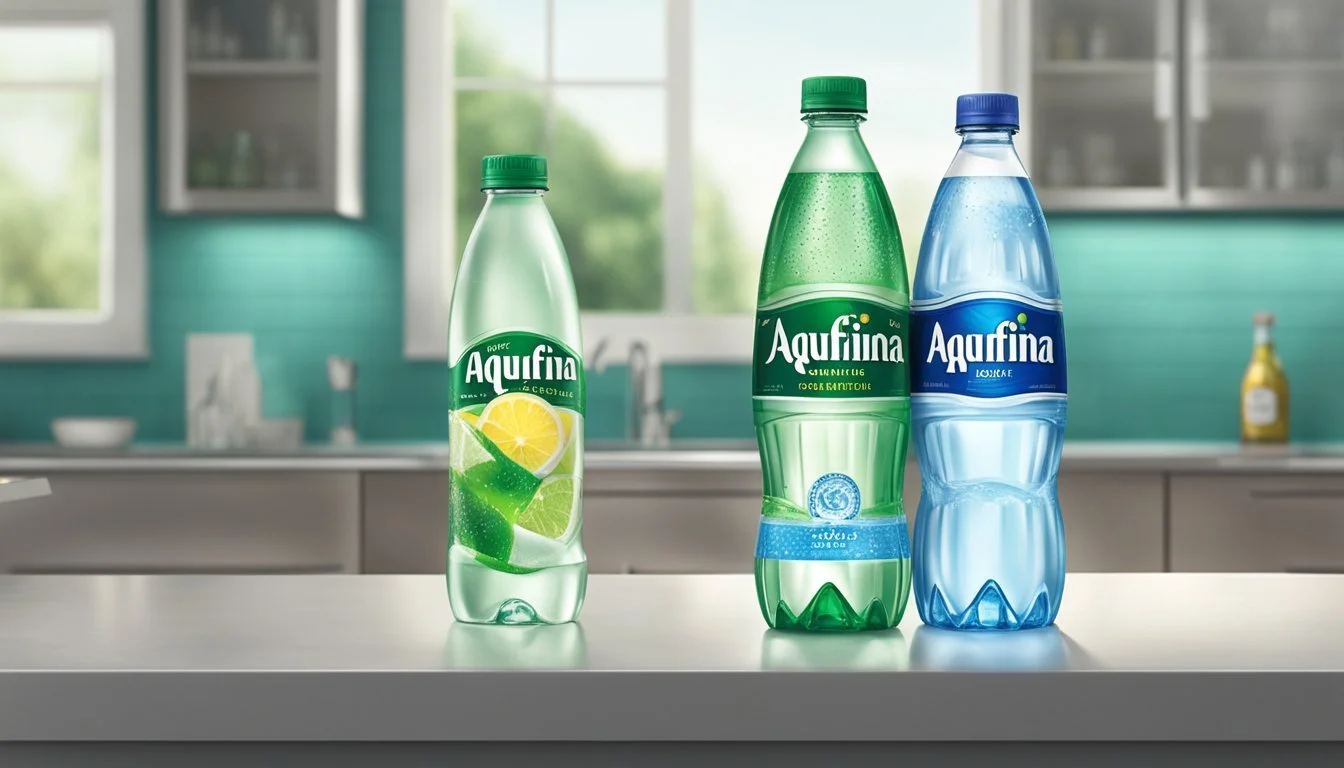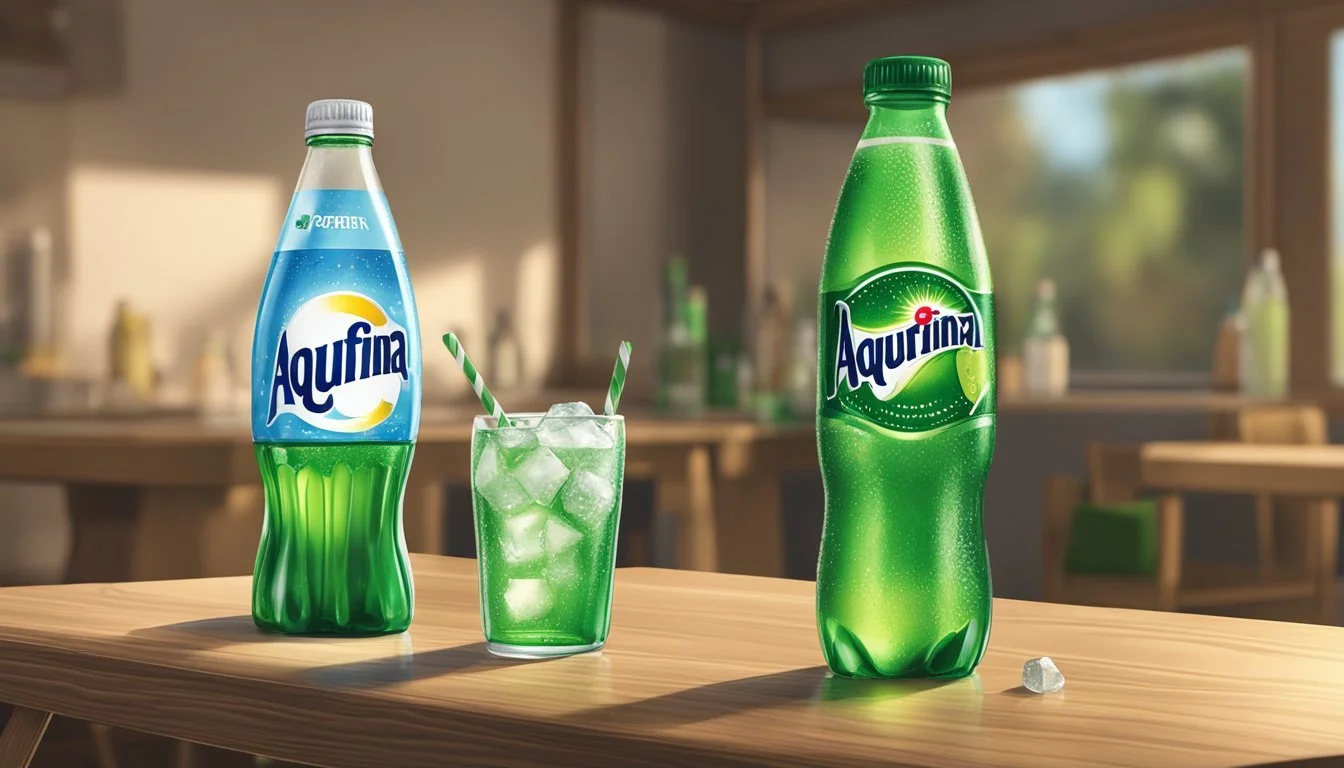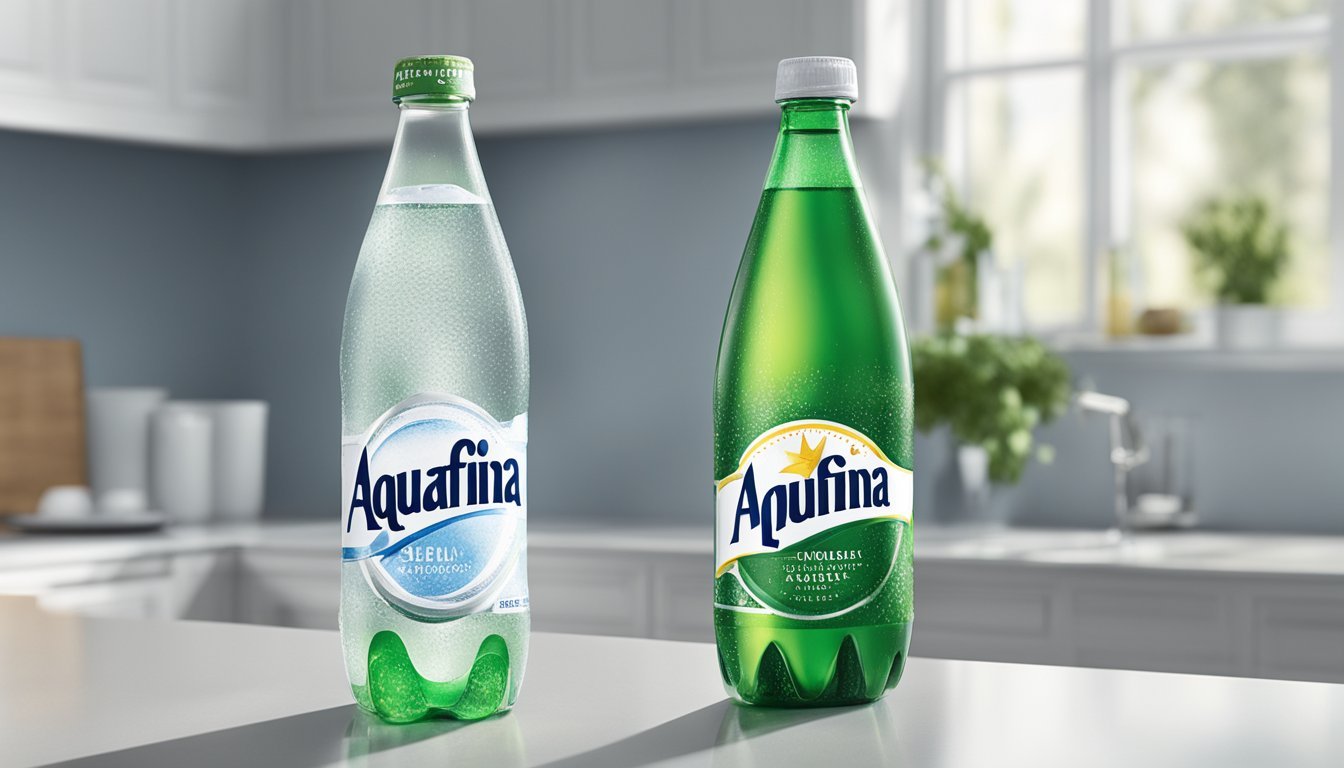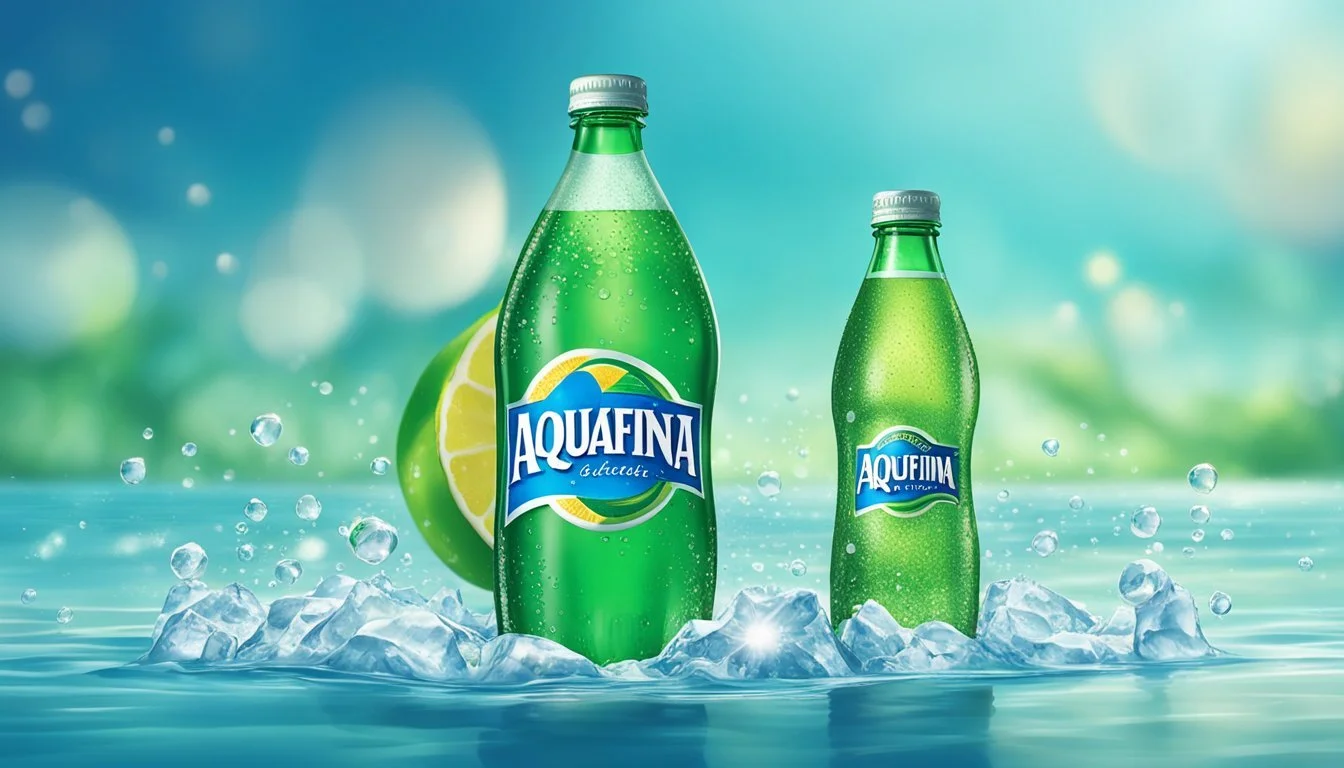Aquafina vs. Perrier
Better Bottled Water? A Clear Comparison
Choosing the right brand of bottled water can come down to several factors, including taste and level of hydration. Two prominent contenders in the market are Aquafina and Perrier. Aquafina, a brand owned by PepsiCo, is known for its purification process that includes reverse osmosis. It offers consumers a taste that is clean and pure, making it a common choice for everyday hydration.
On the other hand, Perrier is a brand that stands out due to its naturally carbonated mineral water sourced from springs in Vergèze, France. The effervescence and unique mineral blend provide a distinct taste that distinguishes Perrier from still water brands. Its reputation as a sophisticated beverage option accompanies its often higher price point, which reflects its positioning as a premium product.
Consumers choosing between Aquafina and Perrier may make their decision based on the desired drinking experience. Aquafina satisfies with its consistent purity and neutrality, ideal for those seeking reliable hydration without additional flavors. Perrier appeals to those who prefer a more vibrant experience with a bubbly sensation and a touch of elegance in their choice of water.
The Basics of Bottled Water
When exploring bottled water options like Aquafina and Perrier, it's useful to understand what bottled water is, its various types, the sources it can come from, and the methods by which it is purified and filtered to ensure safety and taste.
Definition and Types
Bottled water is water that has been packaged in sealed containers for consumer use. The types of bottled waters consumers might encounter include:
Spring Water: This comes from an underground formation from which water flows naturally to the earth's surface.
Mineral Water: Containing not less than 250 parts per million total dissolved solids, mineral water comes from a source tapped at one or more bore holes or springs.
Purified Water: This type of water has undergone a filtration and purification process that may include reverse osmosis, distillation, or other suitable methods.
Understanding Water Sources
The water source is critical in determining the character and quality of bottled water. Sources commonly include:
Underground springs and artesian wells, where water naturally filters through rock formations and gathers minerals.
Mountain spring water typically refers to water that is collected directly from a mountain's natural spring.
Municipal supplies are often utilized for purified bottled water; these are treated and purified to meet drinking water standards.
Filtration and Purification Processes
Bottled water is subjected to various filtration and purification processes to remove contaminants and improve taste. These might include:
Filtration: Processes such as microfiltration, which removes particles like sediment and algae.
Purification: This can involve methods such as:
Reverse osmosis, where water is forced through a semi-permeable membrane to separate impurities.
Ultraviolet light, which disinfects water by killing bacteria and viruses.
Ozone treatment, an oxidation process to eliminate organic and inorganic substances.
Each bottled water brand employs its own combination of these treatments to achieve a distinct quality and composition. For instance, Aquafina uses a rigorous purification process including reverse osmosis, while Perrier is a naturally carbonated mineral water sourced from a spring in France.
Health and Hydration
When evaluating bottled waters like Aquafina and Perrier, it's essential to consider their contributions to health and hydration. Specific factors such as electrolyte content, pH levels, and the absence of harmful substances play vital roles in defining their quality and effectiveness.
The Role of Electrolytes
Electrolytes, such as magnesium sulfate and potassium chloride, are minerals with an electric charge. These are crucial for hydration because they regulate bodily fluids. Aquafina is purified water and does not contain added electrolytes, which may be less ideal for sports hydration where electrolyte replenishment is important. In contrast, Perrier contains naturally occurring electrolytes and minerals due to its source from a spring.
Aquafina: Does not contain added electrolytes.
Perrier: Contains natural electrolytes and minerals.
Understanding pH Levels
The pH level, a measure of how acidic or basic the water is, can affect the body's overall health. Alkaline water, with a higher pH, claims to offer health benefits by neutralizing the body's acidity, although these claims are often disputed and not fully supported by scientific evidence.
Aquafina: Typically has a pH level around 6, which is slightly acidic.
Perrier: Naturally alkaline with a pH level over 7, often around 8.
Assessing Contaminants and Additives
Bottled water should be free from harmful contaminants and limited in additives. BPA, a chemical found in some plastics, can leach into water and is a health concern. Both Aquafina and Perrier use BPA-free packaging, reducing the risk of chemical contamination. It's also important to look at the presence of any additives; while some like minerals for taste are acceptable, others like artificial sweeteners are less desirable.
Contaminants and BPA: Both Aquafina and Perrier offer BPA-free packaging.
Additives: Aquafina is free from additives, and Perrier's mineral content is natural and considered beneficial for taste and health.
Comparative Analysis of Aquafina and Perrier
In the realm of bottled waters, Aquafina and Perrier stand out for their distinct sourcing and treatment processes. This section will compare aspects such as brand origins, taste profiles, and environmental impacts of both brands.
Aquafina: Brand Overview
Aquafina, a brand owned by PepsiCo, presents itself as purified drinking water. This water originates from municipal sources and undergoes PepsiCo's rigorous HydRO-7 filtration process, which includes carbon filtering, reverse osmosis, and ozonation to strip away impurities and achieve purity. Aquafina's label is straightforward, reflecting the brand's commitment to cleanliness and purity.
Perrier: Brand Legacy
Perrier is synonymous with French luxury in the bottled water market. Sourced from a spring in the French Alps, Perrier’s brand is built on its natural mineral water that contains a unique blend of minerals. It also boasts naturally occurring carbonation, giving it a distinctively crisp taste and effervescence. Perrier’s iconic green bottle and elegant label have been its trademarks for over a century.
Taste Profiles and Consumer Preferences
Taste is a key differentiator between these two brands.
Aquafina: Identified by its clean, crisp taste due to its purification process, leaving nearly no trace of minerals or ions; preferred by those seeking pure, unmodified flavor.
Perrier: Known for its naturally fizzy and sharp mineral taste, often chosen by consumers who enjoy a refreshing sparkling water with a hint of complex mineral flavors.
Consumer preferences between the two tend to hinge on whether one favors still or sparkling water, as well as the desirability of mineral content influencing taste.
Packaging and Environmental Impact
Looking at environmental considerations, both companies use plastic water bottles for packaging, creating concerns about BPA (bisphenol A) and long-term sustainability.
Aquafina: Utilizes lightweight plastic containers, reducing material use but still raising questions regarding plastic waste.
Perrier: Offers water in both plastic and glass containers, with glass options being more sustainable and free of BPA concerns, but potentially increasing the carbon footprint due to heavier weight and transportation impacts.
Both brands have received criticism for environmental effects, yet they have made efforts to partially offset these impacts through recycling initiatives and reducing plastic use.
Market Presence and Consumer Choices
In the competitive world of bottled water, market presence and consumer choices play a pivotal role. Brand recognition, consumer perceptions, and global availability are critical factors in determining which water brands lead the market.
Recognizing Popular Brands
Popular brands like Aquafina and Perrier are household names due to their widespread availability and marketing efforts. Not far behind are brands like Coca-Cola's Dasani, Nestlé Pure Life, and Fiji Water. Each of these brands has developed a strong market presence, and brands like Evian, VOSS, or Smartwater, which are often perceived as premium offerings, maintain their status partly through their association with luxury and health-consciousness.
Consumer Trends and Brand Perception
Consumer perception is heavily influenced by marketing, as well as the actual product quality. Aquafina, owned by PepsiCo, is often recognized for its purified water, whereas Perrier, associated with Nestlé, is noted for its naturally carbonated mineral water. While Aquafina is lauded for its clean taste, Perrier is distinct for its effervescence and has a unique, upscale brand perception that appeals to a different consumer segment.
Brand Perception Aquafina Clean, pure, everyday hydration Perrier Bubbly, premium, a lifestyle choice Dasani Convenient, widely available, Coca-Cola's offering Fiji Exotic, pure, artesian source Nestlé Pure Life Accessible, family oriented, a Nestlé product
Bottled Water in the Global Market
The global market for bottled water reflects a diverse array of preferences and needs. Aquafina and Dasani, for example, have a strong presence in the United States, where convenience and cost-effectiveness are often prioritized. In contrast, brands like Fiji Water and Evian are often seen as status symbols and are more frequently marketed in regions with a demand for luxury goods. Despite regional differences in branding and marketing, the availability of these water brands across various markets showcases their adaptability and the pervasiveness of bottled water as a consumer product.
Environmental and Ethical Considerations
When evaluating bottled water brands like Aquafina and Perrier, it is crucial to consider how they approach sustainability and their impact on local communities and resources. These factors play a significant role in determining the ethical implications of their products.
Sustainability Practices
Aquafina:
Packaging: Aquafina utilizes plastic bottles, which are a concern for environmental impact due to their non-biodegradable nature. They have made efforts to reduce the amount of plastic by utilizing lighter bottles.
Sources: As a PepsiCo product, Aquafina is working towards PepsiCo’s goals, which include reducing virgin plastic usage by 50% by 2030.
Perrier:
Packaging: Perrier offers its sparkling water in both glass and plastic bottles. Glass bottles are 100% recyclable and can be more eco-friendly than plastic if recycled properly.
Sourcing: Perrier water is naturally carbonated and sourced from a spring in France, with the brand emphasizing natural processes.
Both companies show efforts toward more sustainable practices, but the choice of packaging material remains a significant factor in their environmental footprint.
Impact on Local Communities and Resources
Aquafina:
Water Rights: Being produced by PepsiCo, Aquafina sources its water from public water supplies, which has raised concerns about the impact on local water rights and municipalities.
Local Impact: The brand's use of municipal water can call into question the balance of community needs versus commercial bottling requirements.
Perrier:
Community Support: Perrier has historically been involved in community initiatives, including projects to preserve the natural environment around its source.
Environmental Impact: Through efforts like carbon offset programs and protection of the spring's surroundings, Perrier demonstrates a commitment to minimizing its local impact.
Each brand presents unique challenges and contributions to their communities and ecosystems, suggesting that eco-conscious consumers consider these factors in their purchasing decisions.
Regulatory Standards and Safety
When comparing bottled water brands such as Aquafina and Perrier, the regulatory standards and safety measures ensure the quality and safety of the water. These standards are upheld by various agencies including the FDA and global regulatory bodies.
FDA Oversight of Bottled Water
The Food and Drug Administration (FDA) plays a crucial role in regulating bottled water in the United States. It enforces standards that bottled water must meet before reaching consumers. The FDA's regulations cover a range of quality aspects, including chemical, physical, microbial, and radiological contaminants. Brands like Aquafina fall under these regulations and are subject to FDA compliance to ensure safety:
Chemical Standards: Maximum levels of contaminants such as volatile organic compounds, heavy metals, and additives are set.
Microbial Standards: Regulations for eliminating pathogens and maintaining microbial safety are enforced.
Aquafina's commitment to safety involves adhering to these FDA regulations and often involves internal quality control measures exceeding the minimum requirements.
International Regulations and Compliance
Internationally, bottled water brands must comply with a variety of global standards. Perrier, being a French brand, adheres not only to European Union regulations but also to those of the countries it is exported to. Key international regulatory points include:
The European Food Safety Authority (EFSA): Oversees safe food practices, including bottled water, across Europe.
Global Standards: International Bottled Water Association and the World Health Organization provide guidance and voluntary standards.
For example, the EPA provides advisory levels for contaminants like PFAS, where the International Bottled Water Association recommends limits more stringent than the EPA's. Brands operating on a global scale, such as Perrier, strive to meet not only local standards but also the varying international benchmarks to ensure consumer safety across borders.
Conclusion
When comparing Aquafina and Perrier, the best bottled water is determined by individual preferences and priorities. Aquafina prides itself on its purification process, resulting in a clean, crisp taste. It's widely available and suits those looking for a convenient, traditional still water.
Perrier, on the other hand, stands out with its natural carbonation and distinct mineral content, offering a unique taste experience. Its effervescence is a favorite for consumers wanting a more upscale and refreshing beverage option.
Here is a quick comparison:
Aspect Aquafina Perrier Source Public water sources Natural springs in France Taste Pure, neutral Minerally, slightly salty Carbonation None Naturally carbonated Variety Regular still water Flavored options, different bottle sizes Price Generally more affordable Premium pricing Accessibility More widely available in many regions Select availability and more niche market
Health-conscious consumers should note both brands are calorie-free and sugar-free, making them suitable choices for hydration. Environmentally conscious individuals may prefer glass-packaged Perrier over Aquafina's plastic bottles.
Ultimately, the choice between Aquafina and Perrier is a matter of taste preference, desired carbonation, budget, and the importance placed on environmental factors.






